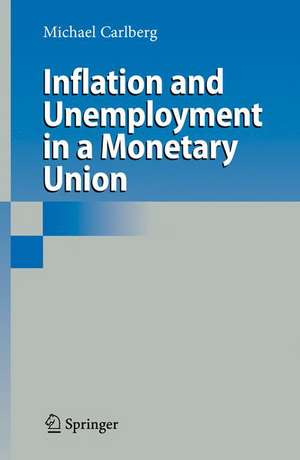Inflation and Unemployment in a Monetary Union
Autor Michael Carlbergen Limba Engleză Hardback – 25 aug 2008
| Toate formatele și edițiile | Preț | Express |
|---|---|---|
| Paperback (1) | 638.57 lei 6-8 săpt. | |
| Springer Berlin, Heidelberg – 19 oct 2010 | 638.57 lei 6-8 săpt. | |
| Hardback (1) | 643.34 lei 6-8 săpt. | |
| Springer Berlin, Heidelberg – 25 aug 2008 | 643.34 lei 6-8 săpt. |
Preț: 643.34 lei
Preț vechi: 756.86 lei
-15% Nou
Puncte Express: 965
Preț estimativ în valută:
123.10€ • 128.79$ • 102.26£
123.10€ • 128.79$ • 102.26£
Carte tipărită la comandă
Livrare economică 03-17 aprilie
Preluare comenzi: 021 569.72.76
Specificații
ISBN-13: 9783540793007
ISBN-10: 3540793003
Pagini: 260
Ilustrații: XV, 243 p.
Dimensiuni: 155 x 235 x 21 mm
Greutate: 0.5 kg
Ediția:2008
Editura: Springer Berlin, Heidelberg
Colecția Springer
Locul publicării:Berlin, Heidelberg, Germany
ISBN-10: 3540793003
Pagini: 260
Ilustrații: XV, 243 p.
Dimensiuni: 155 x 235 x 21 mm
Greutate: 0.5 kg
Ediția:2008
Editura: Springer Berlin, Heidelberg
Colecția Springer
Locul publicării:Berlin, Heidelberg, Germany
Public țintă
ResearchCuprins
The Rate of Inflation.- Monetary Policy in Europe.- Fiscal Policies in Germany and France.- Central Bank and Governments Decide Sequentially.- Central Bank and Governments Cooperate.- The Countries Differ in Size.- The Countries Differ in Behaviour.- The Monetary Union of Three Countries.- The Rate of Unemployment.- Monetary Policy in Europe.- Fiscal Policies in Germany and France.- Central Bank and Governments Decide Sequentially.- Central Bank and Governments Cooperate.- The Countries Differ in Size.- The Countries Differ in Behaviour.- The Monetary Union of Three Countries.- Inflation and Unemployment.- The Model.- Some Numerical Examples.- Monetary Policy in the Phillips Curve Diagram.- Inflation and Unemployment.- Monetary Policy in Europe.- Fiscal Policies in Germany and France.- Central Bank and Governments Decide Sequentially.- Central Bank and Governments Cooperate.- Central Bank and Governments Differ in Loss Function.
Textul de pe ultima copertă
This book studies the coexistence of inflation and unemployment in a monetary union. The focus is on how to reduce the associated loss. The primary target of the European central bank is low inflation in Europe. The primary target of the German government is low unemployment in Germany. And the primary target of the French government is low unemployment in France. The European central bank has a quadratic loss function. The same applies to the German government and the French government. The key questions are: To what extent can the sequential process of monetary and fiscal decisions reduce the loss caused by inflation and unemployment? Is monetary and fiscal cooperation superior to the sequential process of monetary and fiscal decisions?
Caracteristici
Gives a comprehensive description of processes in a monetary union where different targets are pursued by various institutions Includes supplementary material: sn.pub/extras














